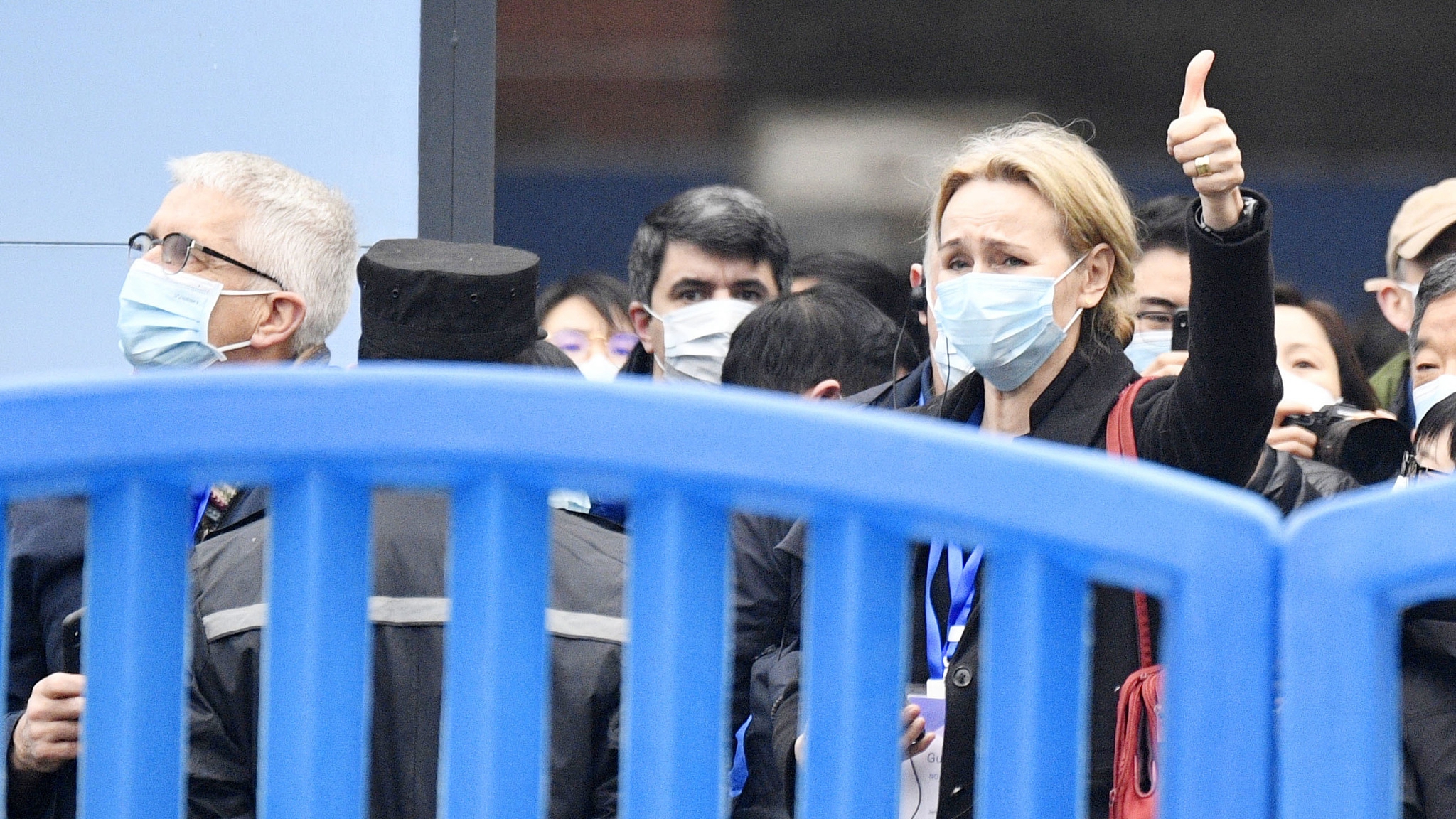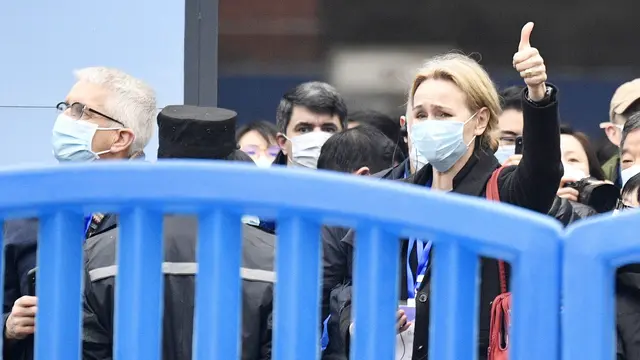
The World Health Organization (WHO) experts are pictured after visiting the Huanan seafood wholesale market in Wuhan, China, January 31, 2021. /CFP
The Huanan seafood wholesale market in central China's Wuhan City is where the first COVID-19 cases in China were found in December 2019.
In January 2021, a panel of World Health Organization (WHO) scientists came to China to study the origins of the novel coronavirus. They went to the market on January 31 for a half-day fieldwork together with their Chinese colleagues headed by Liang Wannian.
During their visit to the market, the WHO experts conducted workshops with the vendors and management staff to learn thoroughly about the overall situation, including who were the salespersons, how the stalls were arranged, what types of goods were sold there, how the market was managed and regulated, and what kind of customers went there, according to Liang.
The market was closed in January 2020, shortly after the first cluster of infections was found related to it. When the WHO team toured there, it remained closed. But the WHO experts were allowed to see everything and had discussions, Liang said at a press briefing in July.
After the fieldwork, Vladimir Dedkov, a WHO expert on the team, said the market might have conditions for the spread of the coronavirus, but there is no evidence that the virus originated there. Scientists have yet to come to an unequivocal conclusion regarding the role it played in the contagion.
In fact, the WHO experts' field trips in Wuhan went far beyond the Huanan market.
On January 29 and 30, the team visited Hubei Provincial Hospital of Integrated Chinese and Western Medicine and Wuhan Jinyintan Hospital, the primary battlegrounds for treating patients in the early days of the coronavirus outbreak. They talked at length with the management staff and medical workers at the hospitals as well as recovered patients.
On February 1, the team visited the Center for Disease Control and Prevention in Wuhan, and talked with local experts. They also went to a level-three biosafety laboratory and a flu reference lab to check samples and research data of initial COVID-19 cases.
On February 2, the team visited veterinary laboratories at Hubei Provincial Center for Animal Disease Control and Prevention and had discussions with local experts.
On February 3, the team went to Wuhan Institute of Virology, where they visited a national laboratory with the highest biosafety level (P4). They exchanged ideas with the institute's experts on their daily work, international scientific cooperation as well as anti-epidemic efforts.
Recalling the field trips in Wuhan, Peter Ben Embarek, a Danish food safety and animal disease scientist who headed the international team, said, "I think we were able to create a space for the science, a space for two groups of scientists to work together. We had nothing to hide, so there was no problem working in an open environment, sharing our work and our discussions as we had them."
 简体中文
简体中文



